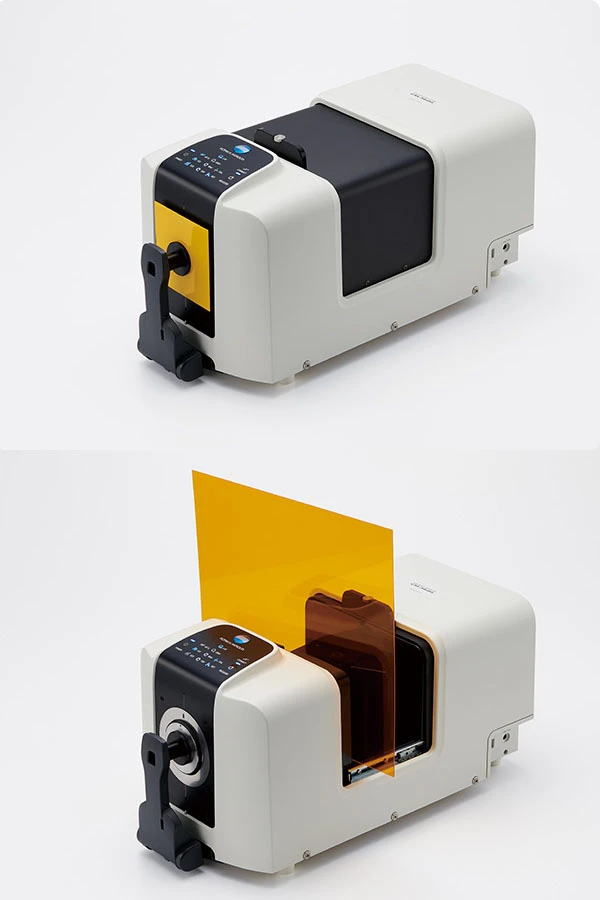การวัดสีแผ่นพลาสติก

แผ่นพลาสติกมีจุดประสงค์ที่หลากหลายและมีความสำคัญต่อการผลิตผลิตภัณฑ์พลาสติกสี– แผ่นพลาสติกไม่เพียงแต่ทำหน้าที่เป็นชุดตัวอย่างของผู้ผลิตเท่านั้น แต่ยังสร้างขึ้นเพื่อตรวจสอบกระบวนการกำหนดสูตรอีกด้วย นอกจากนี้ กระบวนการต่างๆ เช่น การอัดขึ้นรูปและการขึ้นรูปอาจส่งผลต่อสีและรูปลักษณ์ของพลาสติกได้ การสร้างตัวอย่างคราบพลัคพลาสติกแทนการสร้างผลิตภัณฑ์สำเร็จรูปเป็นวิธีที่รวดเร็วในการประเมินสี
แผ่นพลาสติกมีหลายสีและหลายเฉด ตั้งแต่ทึบไปจนถึงโปร่งใส เมื่อทำการวัดสีของแผ่นพลาสติก จำเป็นอย่างยิ่งที่จะต้องคำนึงถึงระดับความน่าเชื่อถือได้ของข้อมูลสี–

เครื่องมือวัดสีเช่น Konica Minoltaสเปกโตรโฟโตมิเตอร์ CM-26dG, สามารถวัดได้ในรูปแบบของ Specular Component Excluded (SCE) และ Component Included (SCI)โหมดการวัดจะเหมาะอย่างยิ่งสำหรับการวัดสีของแผ่นพลาสติกทึบแสง แม้ว่าจะย้อมด้วยสีที่คล้ายกัน แต่แผ่นพลาสติกทึบแสงมันวาวจะดูเข้มกว่าแผ่นที่มีพื้นผิวด้าน โหมดการวัด SCI จะวัดสีที่แท้จริงของแผ่นพลาสติก โดยขจัดผลกระทบจากพื้นผิว ในทางกลับกัน โหมดการวัด SCE จะสร้างการประเมินสีที่สัมพันธ์กับวิธีที่ดวงตาของเรามองเห็นสี
สำหรับแผ่นพลาสติกโปร่งแสงและโปร่งใสที่ยอมให้แสงทะลุผ่านได้ เครื่องมือวัดสีที่สามารถตรวจวัดความโปร่งใสได้ เช่น Konica Minolta Spectrophotometer CM-36dG ยังสามารถดำเนินการทั้งโหมดการวัด SCI และ SCE เมื่อใช้ร่วมกับซอฟต์แวร์ SpectraMagic NX Proและสามารถทำการวัดค่าความเหลืองได้ (ASTM E313) และความชัด (มาตรฐาน ASTM D1003)
นอกจากสีสันแล้วทั้งสองรุ่นก็มีความสามารถอย่างอื่นอีกเช่นกันการวัดความเงา. หาข้อมูลเกี่ยวกับCM-26dGและCM-36dGจากวิดีโอเพื่อเรียนรู้เพิ่มเติมเกี่ยวกับความคล่องตัวในการใช้งาน
หากต้องการความช่วยเหลือในการประเมินสีและรูปลักษณ์ของพลาสติกของคุณหรือค้นหาเครื่องสเปกโตรโฟโตมิเตอร์ที่เหมาะสม สามารถติดต่อกับผู้เชี่ยวชาญด้านสีของเราเพื่อรับคำปรึกษาและคำแนะนำฟรีทันที
